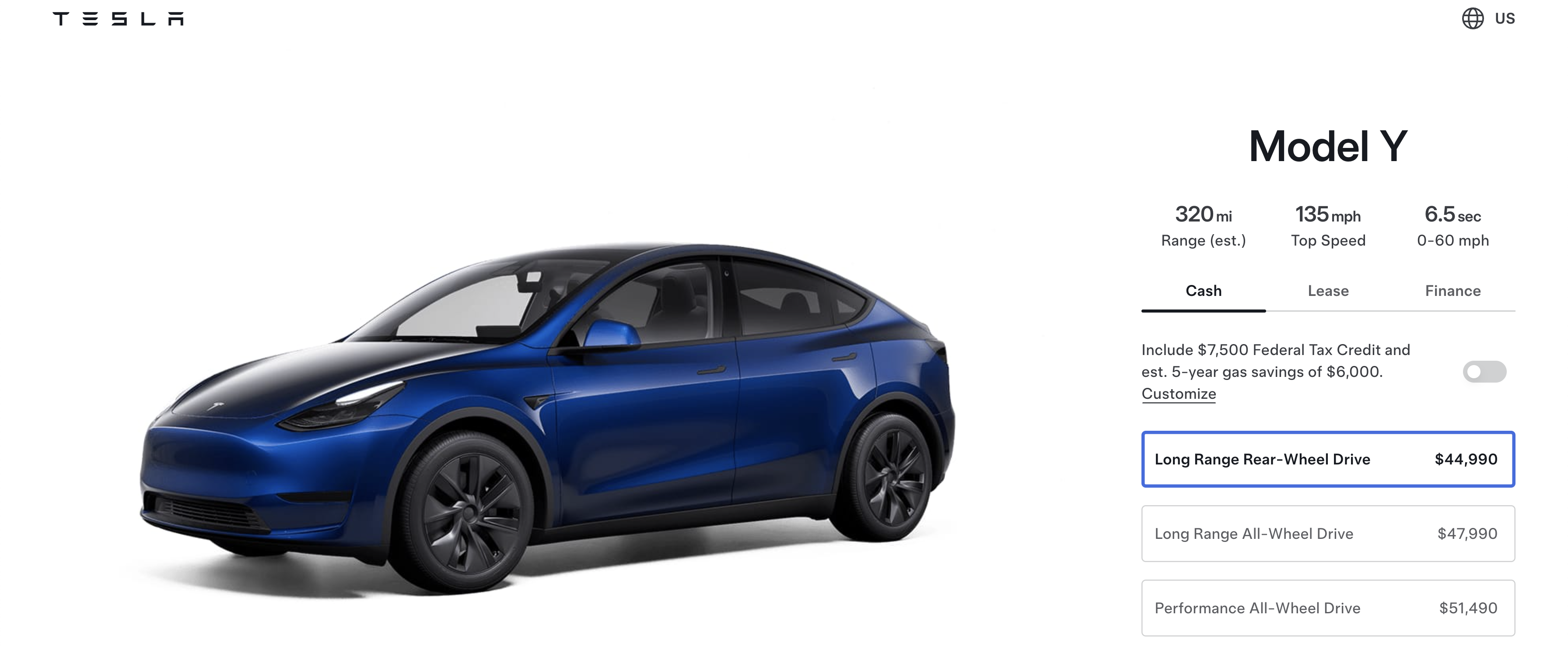Sign up for daily news updates from CleanTechnica on email. Or follow us on Google News!
There are still many people in the automotive industry and many policymakers who hold doubts about the future of fully battery electric vehicles (BEV). They do not know why EV batteries keep getting cheaper and cleaner, and they do not see why they will become truly abundant. The thought is that they are too expensive now and will be too expensive in future. These cynics also often think they are too dirty to produce now and will be too dirty in the future, that they are too heavy now and will be too heavy in the future. And last but not least, they think that BEVs are scarce now and will be unavailable in the future.
Using Wright’s Law, Moore’s Law for batteries, and data from the United States Geological Survey (USGS), all the scare stories that feed those doubts can be debunked. Together, we can see that batteries will become cheaper, cleaner, lighter, and abundant.
Moore’s Law is a Technology Cost Curve
A technology cost curve (TCC) describes how the production costs and capacities of a functionality or product develop over time. It predicts not only the cost decline, but also the capacity increase. The most famous technology cost curve is Moore’s Law. It describes the development of computing power as the halving of the cost and doubling of the number of transistors on an integrated circuit (IC) every 18 months. It is a straight line on a logarithmic scale.
The symmetry of this TCC is what makes it so remarkable and easy to use. Not all TCCs are this beautiful; the battery one shows halving costs every five years and doubling density every 12 years.
The input to a technology cost curve is the steady progress of science over time. The average transfer time of new knowledge to technology is about 10 years. Thus, looking at applicable new science being discovered, that makes a TCC valid for the next 10 years.
Wright’s Law & Learning Curve (Experience Curve)
Other people use Wright’s Law to predict cost decline. Wright’s Law describes an S-shaped experience curve. It states that for every cumulative doubling of units produced, costs will fall by a constant percentage. Or, in other words, when there is more experience producing a certain product, it will become faster and cheaper to produce. This will go fast in the beginning and later slow down. In contrast to Moore’s Law, it does not concern time, only units produced.
Not Just Price That’s Important — Projected Capacity Development Important, Too
Both types of laws originated from observing price erosion over time. When looking for causation, Wright saw a correlation with the cumulative volume produced, Moore with time. A key is the speed with which scientific knowledge progressed.
Wright’s Law and TCCs have different cases in which they are best applied. Wright’s Law is applicable to more complex products. It originated in the aviation industry when observing the cost and the speed at which planes were manufactured. It is also applicable to nuclear power plants and cars. TCCs are generally best with single parts, like chips, hard disks, and batteries.
Technology cost curves like Moore’s Law look at more aspects than just the price. Moore’s Law also describes the number of transistors, and with that the performance. Knowing what the future capacities of chips could be in ten years time was often more important than the price level. This information directed the timeline for the design of products with long development times, like smartphones.
For Batteries, It’s Also Important to Know What Capacity to Expect
For batteries and their use cases, there are comparable situations. To illustrate, density doubles every 12 years and the price reduction for EV batteries is 50% every 5 years. Translated to 2030 compared to 2020, we can have a battery of equal weight with nearly double the capacity for half the price or half the weight and the same capacity for a quarter of the price.
This information can lead the planning of new products. For example, we know what density (400 kWh/kg) is needed for short-haul small planes. For the likelihood of having Boeing 737 or Airbus A320 planes flying using batteries on routes up to 1,000 km, and later 2,000 km, a lot more than 400 kWh/kg is needed.
Today, battery tech trends make fully electric pickup trucks and long-haul semi-tractors possible. In two to four years, the small cars popular in Europe and Asia can get big enough batteries for an acceptable price. Towing a caravan or a boat when going on holiday will not be a problem for the next-generation Chevy Bolt or Nissan LEAF (or their replacements).
And, not predicted by these technology improvement laws, they will also charge faster and be safer, while using less scarce raw materials like cobalt. This we know because it is what companies like CATL, BYD, Tesla, and other battery makers are now doing.
It Is Possible to Produce Enough Batteries
The expectation that batteries will not be available in the quantities needed by the industry is as old as the Toyota Prius. Originally, the belief was that there just was not enough mineable lithium available to even replace a large part of the car fleet with Prius-like vehicles. Now it is the lack of mines and processing capacity for the raw materials that will slow the transition to fully electric driving. However, against all predictions by industry experts, the industry succeeded in scaling production about as fast as demand has been rising. That said, the moment the predicted shortages will be a problem is getting closer. Though, if the industry keeps accelerating the opening of new mines and increases in processing capacity, it is possible that moment will stay in the future indefinitely.
According to the USGS, there are enough lithium reserves and resources to produce three times the number of batteries needed for all land transport. This is without deposits and other sources of lithium that are not being considered for various reasons. A separate article is coming about supposed lithium shortages.
It Is Cleaner to Produce Batteries than We Think …
… because of green energy demand, reduced transport costs, and new technology.
The assumptions around the CO2 footprint of battery production are systematically too high.
The first misconception by many is that CO2 production is not part of the battery production process like it is with processing iron ore into iron and steel.
The second problem is that the estimation of CO2 production for used energy is based on what is common for the industry in general. Yet, green companies often demand green products produced with green energy, and therefore produce less CO2. When only green energy from wind, water, or solar is used, there is no CO2 production at all. For example, aluminum can be from a plant using geothermal energy in Iceland. The gigafactory in Nevada uses only hydroelectric energy and a bit of energy from the solar panels on the roof. CATL has a zero-emission battery plant.
A third problem is that some studies are based on older, smaller, inefficient battery plants, estimating the required energy far too high.
Moreover, transportation costs have been greatly reduced. The business case for the Nevada Tesla gigafactory was that the battery materials travelled twice around the world before they were put into a car. Centralizing production and shortening supply lines could significantly reduce the cost and CO2 from transport. Now, we see initiatives for local processing of all the materials used in batteries, slashing transport further.
And new technology reduces CO2 emissions for EV battery production even more. For example, the dry electrode technologies as introduced independently by Tesla and Fraunhofer, used by a number of battery makers, uses just 1/10 of the energy of the process it replaces.
Because CO2 production is not part of the battery production process itself, battery production can become 100% green over time. I bet that mining and transport that are likely to be the last sources of CO2 production to be eliminated.
ESG Helps Reduce CO2 Emissions
An extra pulse comes from ESG (environmental, social, and corporate governance) reporting many companies now do in conjunction with their annual financial reporting. ESG reporting is a new phenomenon and varies between expected and mandated. It is not only about the number of women on the board of directors. There is reporting on child “artisan” labor in the cobalt industry, the wood that is used for constructing buildings, and measures to lower the greenhouse footprint. It is often called greenwashing, but for this greenwashing, a company has to do something, and that helps to produce greener products.
The Human Factor
The only doubt that is left about the future of transport using batteries is whether people will accept it. Are too many people unwilling to say goodbye to the sound of their ICE showing the neighbourhood how cool the driver is? Will they demand a manual transmission with at least 6 speeds? Are they addicted to the smell of gasoline and regularly visiting the gas station? Or perhaps they like to pay triple the price per kilometer/mile for the privilege to drive a hydrogen fuel cell car?
People are fickle — there’s often no predicting what they will choose. But I have a suspicion that it will be battery electric driving in this case.
Written in collaboration with Jolanda Vinkhuyzen.
Have a tip for CleanTechnica? Want to advertise? Want to suggest a guest for our CleanTech Talk podcast? Contact us here.
EV Obsession Daily!
I don’t like paywalls. You don’t like paywalls. Who likes paywalls? Here at CleanTechnica, we implemented a limited paywall for a while, but it always felt wrong — and it was always tough to decide what we should put behind there. In theory, your most exclusive and best content goes behind a paywall. But then fewer people read it!! So, we’ve decided to completely nix paywalls here at CleanTechnica. But…
Thank you!
Tesla Sales in 2023, 2024, and 2030
CleanTechnica uses affiliate links. See our policy here.




